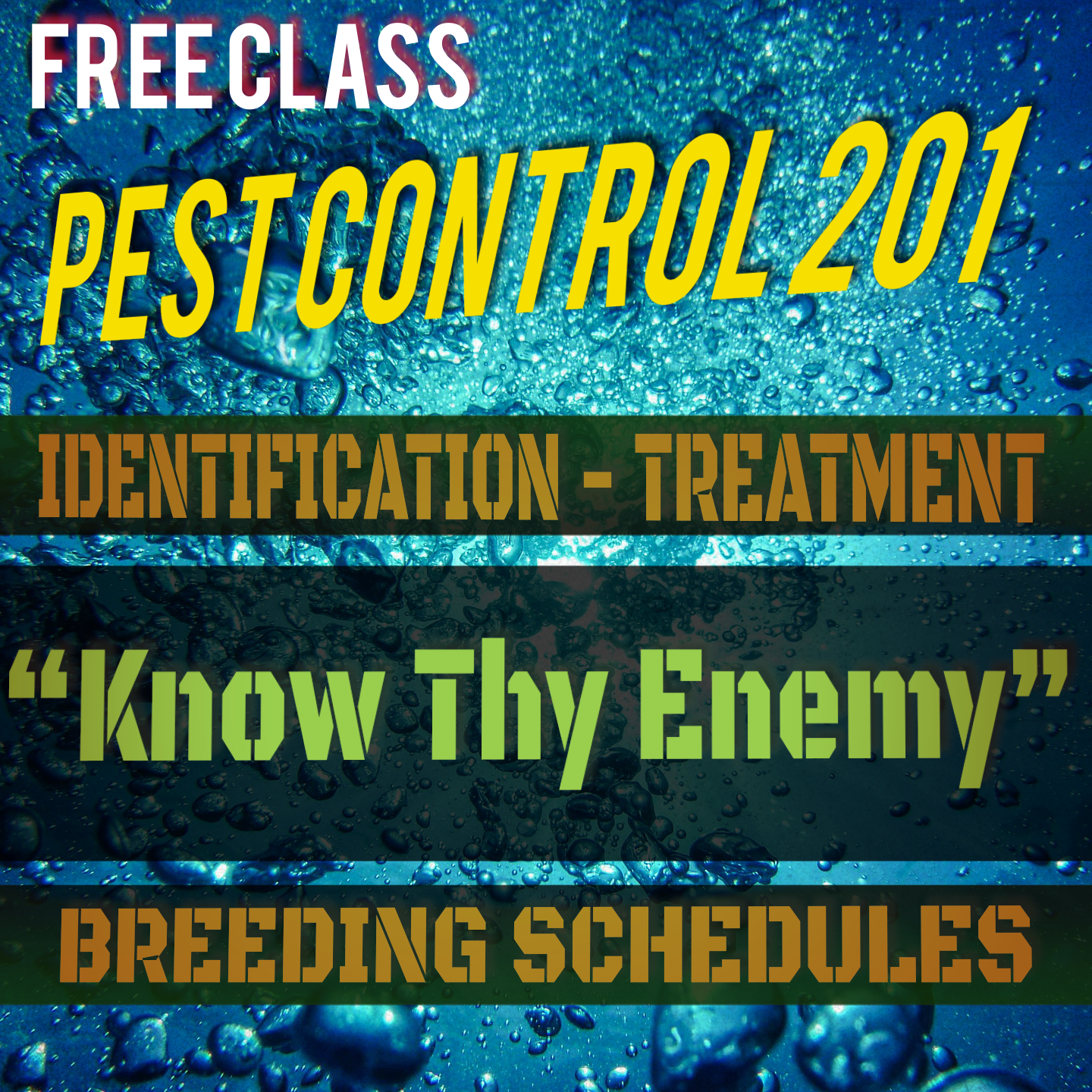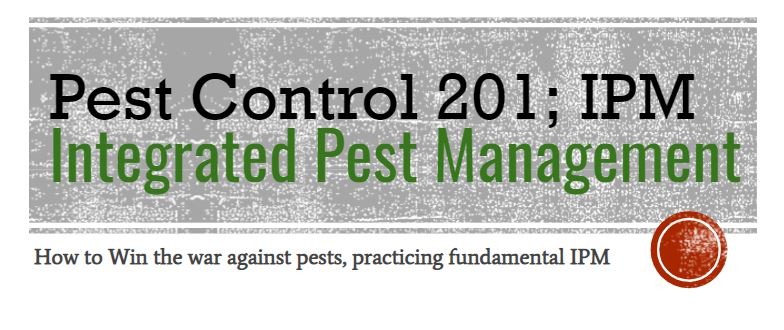Learn 2GROW Series: Integrated Pest Management 201, Topic: Controls
Information posted here was taken from our most recent (free) grow class Pest Control 201.
To see when this free grow class is available again check our 2019 class schedule.


All IPM practices in this blog series are 100% Organic
IPM Controls
Long story short, controls in the sense of IPM, are literally the things a farmer "can control". Indoors this can be a lot of things. Outdoor farmers however have much less control, so the few things they can control they must utilize to their full potential when battling pests. The nice things about these controls were going to cover is there are no wrong answers. As long as pests have a harder time colonizing your garden your doing it right. The un-doubtable ultimate goal of IPM controls is to not use synthetic/harmful pesticides to keep your garden pest-free.
There are four types of controls
1.Biological Control
The use of natural enemies—predators, parasites, pathogens, and competitors—to control pests and their damage. Invertebrates, plant pathogens, nematodes, weeds, and vertebrates have many natural enemies.
I am a HUGE advocate of carnivorous plants, especially pitcher plants. They produce a sweet sticky substance that attracts and traps most airborne pests. For a small upfront costs and the low amount maintenance (all they need is water) its a real win-win.
#Growfamily Pro Tip: If you buy ladybugs don't unleash them in your garden. The adult ladybugs will not hunt down pests like you think. They are old and all they want to do is eat, drink, and reproduce. It's the young and growing ladybugs that are notorious for eating 11 aphids an hour. If you all put the lady buds in a humidity dome with (organic) raisins and a sea sponge (has to be natural, don't use a synthetic sponge) soaked with distilled water, the adults will eat/drink/reproduce while the young ones find a way out of the dome to terrorize your garden. This is a much more efficient way to use ladybugs as predatory insects. We do not suggest using lady bugs but if you do, try this.
Biological control is a huge aspect of permaculture especially. The farmer mindset is to attract these "helpers" naturally so they don't have to buy them. This is actually why most farmers have bird feeders. Yes bird watching is fun however one of the farms I worked on (where he had been feeding the birds for 30+ years) always had different species coming onto the farm periodically. When they visit the farm they eat A LOT of insects which is A LOT less insects to worry about eating your crops.
2. Cultural Controls
Cultural controls are practices that reduce pest establishment,reproduction, dispersal, and survival. For example, changing irrigation practices can reduce pest problems (gnats especially,) since too much water can increase root disease and weeds.
In the last post IPM: Preventative Practices we used a spider mite infestation example. Mites are incredibly fast at reproducing when the conditions are right (hot and dry). So one way to culturally control them is by cooling of your environment and increasing humidity. Mites really don't like the cold/moisture and it will decrease the rate of reproduction, making it faster and easier to eradicate the infestation.
Some growers use cold temps ( everynight, 60 degrees) as a cultural preventative to stop mites from even thinking about sleeping in their garden.
If your indoors that means decreasing the temperature. If your outdoors that means pruning for more air flow, cooling the temperature inside the canopy.
3. Mechanical or "Physical" Control
Mechanical and physical controls kill a pest directly, block pests out, or make the environment unsuitable for it. Traps for rodents are examples of mechanical control. Plucking pests off the plants ole' fashion is considered a physical control. Other examples are mulches for weed management, steam sterilization of the soil for disease management, or barriers such as screens to keep birds or insects out.
#GrowFamily Pro Tip: Yellow sticky paper is primarily for identifying pests, not trapping them. There is a lot of misconception here with newbies. Don't think by hanging yellow paper that your safe from pests. It's designed to let you know you have pests.
4. Chemical Control
Chemical control is the use of any pesticides. The goal of IPM is to utilize the first three controls before having to resort to a chemical control (organic or not). Pesticides are used only when needed and in combination with other approaches for more effective, long-term control. They are selected and applied in a way that minimizes their possible harm to people, nontarget organisms, and the environment. With IPM you'll use the most selective pesticide that will do the job and be the safest for other organisms and for air, soil, and water quality.
An Example of how to fully utilize Bio, Cultural, and Mechanical Controls
If you like this blog post check back again next week when we continue the Learn2GROW series.
Topic: Spider Mites
Learn2Grow is a Grow Blog designed for growers of all levels. If you have any questions, comments or #GrowFamily suggestions never hesitate to email Doug@Shoregrow.com
*All #GrowFamily Tips are from members of the local community.

Recent Posts
-
A Brief Overview of Grow Light Maintenance
Growing plants indoors requires efficient tools and great dedication. If the grow lights are produci …Apr 19th 2024 -
4 Important Benefits of Hydroponic Gardening
The traditional approach of gardening is taking a backseat to hydroponics. Rather than growing in so …Mar 26th 2024 -
4 Telltale Signs of Mildew on Cannabis Plants
One of the biggest antagonists to growers is mildew. Plants stuck in environments with high humidity …Feb 22nd 2024




